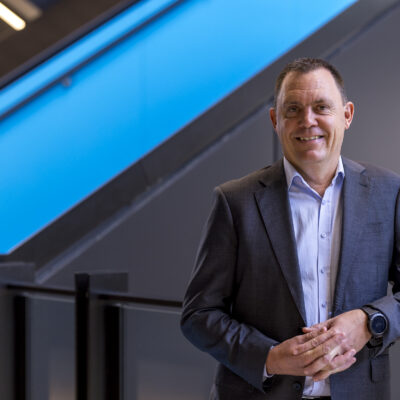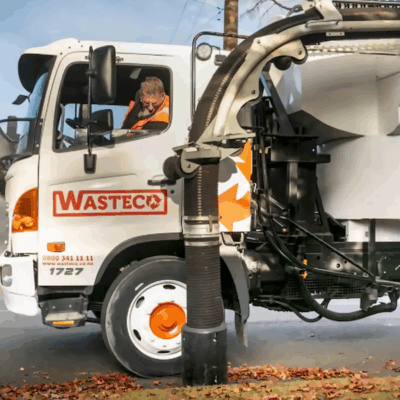Enabling the gamified world
Following computers, the Internet, and the mobile phenomenon, there’s a fourth-wave of…
Following computers, the Internet, and the mobile phenomenon, there’s a fourth-wave of technology sweeping the world. Augmented and virtual reality platforms are on the rise, and globally-focused developer Imersia is a front-runner in the race to capitalise on it.
I had to navigate a scene of upheaval to reach the office of Imersia and its co-founders Dr Roy Davies and Jon Lowther. Occupying shared space in the abandoned Herald/NZME building in Auckland’s Albert Street, which itself is one gargantuan construction site for the city’s rail loop, I find the two leading exponents of augmented reality and virtual reality (AR/VR).
Getting Roy and Jon together had been a mission anyway. At the beginning of the year they were setting up to raise up to $5 million for a Series A round of funding.
If that sounds a lot of initial funding for an emerging technology, put it in context with the potential of the global AR/VR market. As reported at Bloomberg.com, investment in augmented and virtual reality reached $1.1 billion in the first two months of 2016 alone.
Imersia’s platform incorporates artificial intelligence (AI) and a powerful analytics engine. The platform makes the most of gamification and story-telling techniques to present content, to engage and influence consumer behaviour. It uses AR/VR as the medium and cloud computing as the tool; with mobile devices and wearable technologies as the user interface.
End user engagement is simple. The reality browser selects content defined by the location and user context. The browser users the camera, GPS, compass and inertial sensors on your mobile device to literally tap into or ‘see and hear’ a contextually defined mixed reality world. Think Pokemon Go on steroids.
It is the ‘New Reality’ of opportunity (as covered by our Feb 2017 story on Jessica Manins and the NZ VR/AR Association), and the Imersia platform has been catching the eye of movie studios and other large content creators as a unique way to reach today’s consumers.
Validation and commercial trials are under way in New Zealand, Asia and the US – where a major studio has engaged Imersia to conduct trials with a view to launching the world’s first mixed reality movie campaign. As well as the movie and entertainment industries, target markets include mobile gaming, smart cities, and travel and tourism.
Roy Davies demonstrates one application that’s being developed for the destination tourism market. Visitors to Auckland can learn about the unique Maori cultural stories associated with the city and its surrounds by aiming their smartphone at various ‘marker’ locations – revealing animated 3D mythological Maori characters. One is located in the middle of Viaduct Harbour which, on water, can be viewed and heard 360-degrees.
Roy explains Imersia’s purpose as “affecting behaviour change”. “Other companies may track people, but we also encourage people to do certain things – much like Pokemon Go.”
Jon Lowther is quick to point out the difference between AR and VR. The latter essentially a form of escapism involving a headset, a ‘streamable experience’ that can be supported by the Imersia platform.
“But the guts of our engineering is really all about how AI can evolve; what we call augmented reality, or even ‘augmented intelligence’ that defines connect points all around you,” explains Jon. “Think of us as an AR or VR content service provider.”
Roy and Jon met four years ago through a mutual business mentor.
Roy, who has a masters in computer science and PhD in cognitive science and human factors, had just returned from a 12-year post founding and running a Swedish VR research centre. (People may regard VR as a relatively recent technology, but his involvement spans 20 years.)
He was also the first CEO, and then CTO, behind start-up NextSpace – a 3D visualisation hub.
Jon describes his background as eclectic. “I was a bit of an early starter. At the age of seven I was getting poetry published. At nine years old I was the youngest member of the Inventors Association,” he recalls. “I was passionately interested in just about everything.”
An arts degree was spawned from his love for music, media and communications. He even spent time in Japan’s rock music industry, and running a business there.
Jon’s passion for computers came from his father, an airline pilot who taught him an early form of machine language. “That paved the way to a job at the ASB computer centre, which back then was still punching cards.
“It was an incredibly mind-numbing job, but it was just so exciting to be near those computers. It was like something out of Star Trek!”
Roy and Jon have much in common – they were both sponsored by Commodore Computers at high school and tertiary level. “Computer work back then involved waiting all day for a programme to back up on tape – a programme that would take about two minutes to play,” Jon remembers.
Jon had a start-up too – a ‘first movement’ Internet company called Latitude. His first experience with VR gaming came through a partnership with Silicon Graphics International (SGI).
“This shows how far back VR goes. This was 25 years ago and both Roy and I were investigating these technologies back then.”
Pervasive computing
You have to see Imersia’s platform in action to truly understand what it’s all about. Jon talks of a “connectivity tissue that’s human to human”, and the dawn of a new PC – Pervasive Computing.
“The pervasive computer is starting to become omnipotent and omniscient. That’s where we’re at right now.
“Augmented reality is really a viewer,” he adds, “and we support AR in its various iterations throughout our platform.
“The bigger picture is developing intelligence that wraps around everything and provides more visible connectivity capability when you’re least aware of it.”
Roy refers to creating a ‘magical game world’ that’s all around you. “Imersia is about gamifying a retail or product experience even in an entire vertical.”
Gamifying is providing hooks and measures and the ability to influence people’s behaviour, not once but many times, says Jon.
For Imersia, the key beneficiaries short-term are consumers (user experiences) and brand partners. Longer term it’s about developing the infrastructure to hang everything on.
On May 1st, Roy and Jon are relaunching the company as Imersia Reality, to end the confusion around AR, VR and various other ‘realities’. What with funding rounds, hiring new developers (including interns from AUT) and managing development teams in the US, Singapore and Auckland, life for the two co-founders has never been busier.
As for the evolution of gaming, with Imersia’s platform it’s no longer about the game itself or ‘the escape’, says Jon. “It’s about enveloping our lives in such a way that it can add value to many different scenarios. Enabling a gamified world with stronger, more resonate connections.”
“We’re still in the starter’s blocks of the next race,” says Roy. “And it’s about much more than just AR. But how it evolves and what it supports, we think, will very much play to our strengths.”
Augmented reality is demonstrated on these pages to show its marketing potential within print publishing. Using your Android smartphone, simply search for and download the ‘Rehua Awakens’ App to bring the image on page 43 alive.






